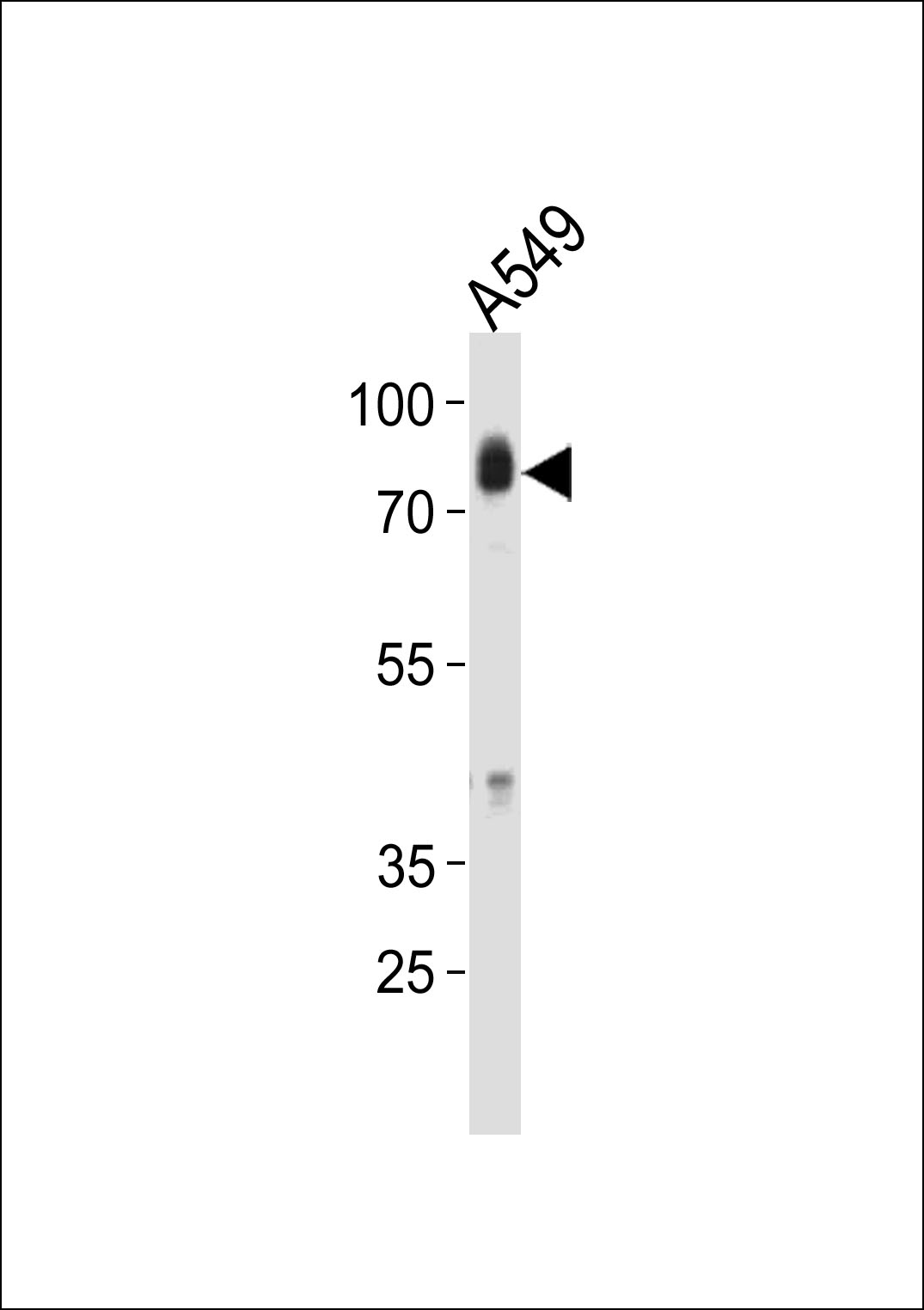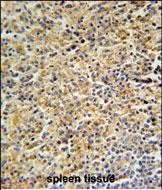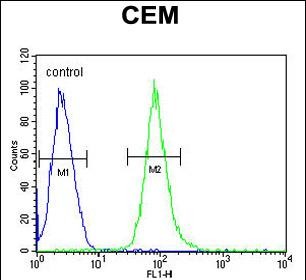产品名称
HCK Rabbit Polyclonal Antibody (N-term)
别名
Tyrosine-protein kinase HCK, Hematopoietic cell kinase, Hemopoietic cell kinase, p59-HCK/p60-HCK, p59Hck, p61Hck, HCK
存储缓冲液
Purified polyclonal antibody supplied in PBS with 0.09% (W/V) New type preservative N. This antibody is purified through a protein A column, followed by peptide affinity purification.
Human Gene ID
NP_001165600.1;NP_001165601.1;NP_001165602.1;NP_001165604.1;NP_002101.2
Human Swissprot No.
P08631
特异性
This HCK antibody is generated from rabbits immunized with a KLH conjugated synthetic peptide between 131-156 amino acids from the N-terminal region of human HCK.
稀释度
WB~~1:1000;IHC-P~~1:100~500;FC~~1:10~50
运输及保存条件
Maintain refrigerated at 2-8°C for up to 2 weeks. For long term storage store at -20°C in small aliquots to prevent freeze-thaw cycles.
背景介绍
HCK is a member of the Src
family of tyrosine kinases. This protein is primarily hemopoietic,
particularly in cells of the myeloid and B-lymphoid lineages. It
may help couple the Fc receptor to the activation of the
respiratory burst. In addition, it may play a role in neutrophil
migration and in the degranulation of neutrophils. Multiple
isoforms with different subcellular distributions are produced due
to both alternative splicing and the use of alternative translation
initiation codons, including a non-AUG (CUG) codon. [provided by
RefSeq].
组织表达
Detected in monocytes and neutrophils (at protein level). Expressed predominantly in cells of the myeloid and B-lymphoid lineages. Highly expressed in granulocytes. Detected in tonsil
细胞定位
[Isoform 1]: Lysosome. Membrane; Lipid-anchor. Cell projection, podosome membrane; Lipid-anchor. Cytoplasm, cytosol Note=Associated with specialized secretory lysosomes called azurophil granules. At least half of this isoform is found in the cytoplasm, some of this fraction is myristoylated Cytoplasmic vesicle, secretory vesicle. Cytoplasm, cytosol
功能
Non-receptor tyrosine-protein kinase found in hematopoietic cells that transmits signals from cell surface receptors and plays an important role in the regulation of innate immune responses, including neutrophil, monocyte, macrophage and mast cell functions, phagocytosis, cell survival and proliferation, cell adhesion and migration. Acts downstream of receptors that bind the Fc region of immunoglobulins, such as FCGR1A and FCGR2A, but also CSF3R, PLAUR, the receptors for IFNG, IL2, IL6 and IL8, and integrins, such as ITGB1 and ITGB2. During the phagocytic process, mediates mobilization of secretory lysosomes, degranulation, and activation of NADPH oxidase to bring about the respiratory burst. Plays a role in the release of inflammatory molecules. Promotes reorganization of the actin cytoskeleton and actin polymerization, formation of podosomes and cell protrusions. Inhibits TP73-mediated transcription activation and TP73-mediated apoptosis. Phosphorylates CBL in response to activation of immunoglobulin gamma Fc region receptors. Phosphorylates ADAM15, BCR, ELMO1, FCGR2A, GAB1, GAB2, RAPGEF1, STAT5B, TP73, VAV1 and WAS.



